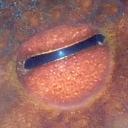Yahoo Answers is shutting down on May 4th, 2021 (Eastern Time) and beginning April 20th, 2021 (Eastern Time) the Yahoo Answers website will be in read-only mode. There will be no changes to other Yahoo properties or services, or your Yahoo account. You can find more information about the Yahoo Answers shutdown and how to download your data on this help page.
Trending News
Can the average Joe test CCA on a car battery?
My voltmeter is reading 11.2 instead of the normal 12.4
I have a cheap voltmeter. Will that work?
I live in the desert & as you know the heat is what kills the battery. They last about 2 years. Trouble is if the battery is marginal the stores won't give you a replacement.
It has to be dead, who wants to wait for that & be stranded.
4 Answers
- RobsteriarkLv 74 years agoFavorite Answer
Actually, it's the opposite. Cold is what kills batteries of all types. I've lived in countries with very high temperatures myself (mostly the Arabian Gulf states) and never found heat to be any problem for car batteries; there's also far less load on one which would be considered useless in a cold climate because the engine oil is never thick on the first cold start of the day making the engine far easier to crank.
A voltmeter alone is useless for testing CCA which stands for Cold Cranking Amps. That ideally needs an ammeter to measure how many Amps the battery can deliver under load.
Your voltmeter readings also need greater explanation: is that the reading direct from the battery when the engine is off? If so then yes, for a fully charged battery it would be low. But the low voltage could be due to poor alternator output and abrasive desert dust really does kill alternators. Also if you're mostly doing short runs and using a powerful tropicalised air conditioner then that will draw a lot of power which can result in a net depletion of the battery. So try removing the battery and fully recharging it before you measure the voltage and check for CCA.
A fully charged battery with nothing drawing power from it should read 12.6v. When the engine is running the voltage should read between 13.6v at idle and 14.7v at higher RPM, again with all lighting and the aircon turned off. When the engine is running you're really measuring the alternator output so if at idle you get less than 13.6v then the alternator output is too low and if at high RPM it exceeds 14.7v then the alternator regulator isn't working properly and is overcharging the battery and that is a definite battery killer. Note that fitting a new or rebuilt alternator to a car with a bad battery can quickly cause the alternator regulator to fail again, so always check both parts when you know that you have to replace one or the other.
Also note that a lot of battery sales outlets use a crude battery hand-held tester which just measures the voltage under load using an inaccurate conductance methods. The correct tester is one which uses a true pile carbon load. On a CCA test the battery should maintain at least 9.6v for 15 seconds at one-half the CCA rating and assuming a minimum ambient temperature of 21ºC/70ºF or above.
Finally, you get what you pay for with batteries. The better ones with the longer four or five year warranties will also allow replacements for marginal batteries and the warranty is backed by the manufacturer, not the retailer. The battery itself is often pretty identical beneath the skin to a battery with a much shorter warranty, but you're often paying mostly for the more expensive and far more comprehensive battery warranty. But budget batteries often only last two years and are often sold mostly as a quick cheap fix for someone about to sell a car or for owners who know they're driving an old beater just one expensive fault away from being scrapped.
- 4 years ago
With nothing but a battery charger you could remove either your coil wire or power to the ignition and then crank it over when it is cold and you do not intend to go anywhere for a few hours . Crank it for 25 seconds and if it still sounds strong the battery should be fine, then simply recharge the battery with your charger and hook up your ignition circuit.
- Anonymous4 years ago
Agree with Robsteriark its all ways the first cold snap here that gets the mobile battery bloke busy.
- mustangerLv 74 years ago
Cold is harde on the battery than the desert heat. That's why they rate them for CCA which stands for cold cranking amps and is measured at 32F. Try turning that engine over in Minnesota in the dead of winter and you'll find out what is REALLY hard on a battery.




